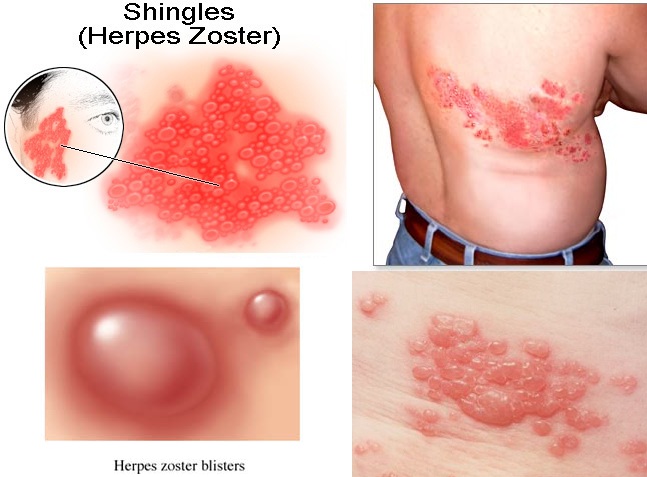Learn all about shingles major sign and symptoms!
What is shingles?
Shingles is an acute and painful inflammatory virus disease affecting the skin overlying one or more sensory nerve trunks. The virus that causes shingles is the same kind of virus as causes chickenpox (varicella). The skin eruption of shingles is characterized by groups of small blisters on inflammed red skin areas.
The skin eruption breaks out in crops, each succeeding crop tending to locate nearer the end of the related nerve trunk than did the preceding crop.Although shingles can occur anywhere on your body, it most often appears as a single stripe of blisters that wraps around either the left or the right side of your torso. The blisters sometimes become pustules before drying.In severe cases they may tum into small spots of gangrene.
Is shingles contagious?
Shingles is a disease having very close resemblence to chickenpox. The herpes zoster virus is also termed as varicella-zoster, responsible for both chickenpox and shingles.Once you’ve had chickenpox, you’re infected with the herpes zoster virus.The virus will remain inside your body in an inactive form for many years.If the virus activates again, you get shingles. You can only get shingles if you’ve had chickenpox.
Shingles pain is neuralgic in character and may develop before the blisters appear and it may persist for weeks, months, or years after all signs of the eruption are gone.This is especially true of elderly people, and outstandingly so when the forehead and face are involved.The nerves which supply the skin of the chest are most likely to be affected.
The usual course of the disease is 4-6 weeks.The severity of disease is It is less in young persons as compared to elder people.Major risk factors that favor development of disease include damp and chilly weather,Overwork, general debility, absorption of certain drugs, and toxic compounds arsenic, or contact with a case of chicken pox. The specific cause, however, is a virus which affects both the nerve roots and the skin over them. One attack of shingles gives a high degree of immunity. Second attacks are rare.
Shingles sign and symptoms
Shingles usually affects small area of the body and its sign and symptoms include
- Fluid-filled blisters
- Pain, burning and numbness
- Red rashes
- Itching
- Fever and chills
- General achiness
- Headache
- Fatigue
- Burning sensation
Shingles Treatment
Shingles does not have permanent treatment but prompt treatment with specific antivirals can speed up healing and reduce the severity.However, in case of chicken pox virus permanently remains inside your body in an inactive form and may become activate leading towards shingles.Number of antiviral drugs are used in management of shingles some of them are
- Acyclovir (Zovirax)
- Valacyclovir (Valtrex)
- Famciclovir (Famvir)
Shingles pain is neuralgic in character due to which anti-convulsants are also used such as
- Gabapentin
- Carbamazepine
- Pregabalin
 Health & Care Information
Health & Care Information 


